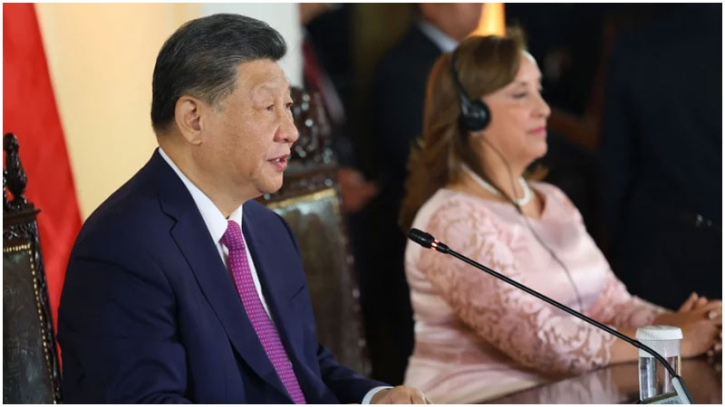Trump's freeze on foreign aid could give China an opening on the world stage

President Donald Trump's restrictions on foreign aid and targeting of a key agency funding programs around the world may be offering an opening to America's biggest adversary — China.
From the dismantling of the US Agency for International Development to quitting international groups, Trump’s drastic “America First” moves have raised concerns among some lawmakers and experts about whether the US is ceding global influence to its rivals, especially at a time when Washington is fretting over Beijing’s growing clout at the cost to American interests.
Foreign assistance offered the US a source of “soft power” — allowing it to cultivate goodwill, build alliances and counter adversaries in a bid to shore up national security without having to dispatch troops, weapons or other more coercive measures.
In Cambodia, the contrast could not be sharper than China sending $4.4 million to support demining operations, as Trump halted a $6.3 million grant from the State Department’s Office of Weapons Removal and Abatement partly meant to clear “US-origin unexploded ordnances as the remnants of war.”
Administration officials say it’s past time to review how America spends money abroad.
Asked if the US was giving China and Russia an opening for greater global influence, national security adviser Mike Waltz denied that, telling NBC’s “Meet the Press” recently that “all too often, these missions and these programs ... are not in line with strategic US interests like pushing back on China.”
In Panama, the Trump administration got the government to quit the Belt and Road Initiative, Beijing’s flagship overseas development program, prompting condemnation from China.
What it means for the US to step back
Experts and lawmakers disagree on the impact of the US taking a step back from foreign aid. Lawsuits are challenging the administration's freeze on foreign assistance and moves against USAID, with temporary holds on some of those efforts.
“The second Trump administration will deliver the goal for China” of wielding greater global influence, Feng Zhang, a visiting scholar at Yale Law School’s Paul Tsai China Center, said at a recent debate in Washington.
Sen. Andy Kim, a Democrat from New Jersey, was worried for the same reason. “China doesn’t even need to fight for their influence around the world now because of our own effort,” Kim said recently on “Meet the Press.”
Rep. John Moolenaar, a Republican from Michigan who chairs the House Select Committee on the Chinese Communist Party, said it could be time for change on foreign assistance.
“I think as we dig into this, we’re going to find out what’s been working and what hasn’t been working," he said. “And then how do we innovate to a new way of promoting American interests, American values and being clear on what those values are.”
Dennis Wilder, a senior fellow at the Initiative for US-China Dialogue on Global Issues at Georgetown University, said global influence goes beyond foreign aid, with the US commanding the world's most powerful military and its dollar dominating the financial system.
Let's not “accept at face value that China is ready or able to step in where the US may be leaving a vacuum,” Wilder said.
The Chinese embassy in Washington said Beijing is “willing to work with all countries and parties, including the US, to strengthen exchanges and cooperation in the field of development, so as to promote common development and prosperity among all countries.”
The foreign aid rivalry
The two countries — the primary players in global development — are spending foreign assistance differently. Most Chinese money is issued as debt and typically spent on energy and infrastructure projects.
Most US funds were disbursed as grants or loans with low or no interest rates in areas like public health and humanitarian aid, said AidData, an international development research lab at William & Mary University’s Global Research Institute.
In Peru, Chinese money helped build the $1.3 billion megaport in Chancay, which opened in November during a visit by Chinese President Xi Jinping. US foreign aid in Peru, by contrast, was used to finance coffee and cacao as alternatives to cocaine production.
Elsewhere, American dollars helped fight HIV/AIDS in Africa, treated malnourished children in South Sudan and provided medical services at an immigrant shelter in Mexico.
Acknowledging that the US should fund tangible foreign projects like ports and factories, Congress in 2018 established an institution to combine government funding with private investments for projects such as the trans-Africa rail project in Angola.
Overall, China spent $1.34 trillion on nearly 18,000 overseas development projects between 2000 and 2021, averaging about $61 billion a year, AidData said.
The US disbursed $1.24 trillion in foreign aid, including military assistance, between 2001 and 2023, the research lab said.
USAID, created during the Cold War to counter Soviet influence, is the single largest US government player in foreign aid. It paid out $43.8 billion in 2023, AidData said. That is equivalent to less than 1% of total annual government spending.
.png)




